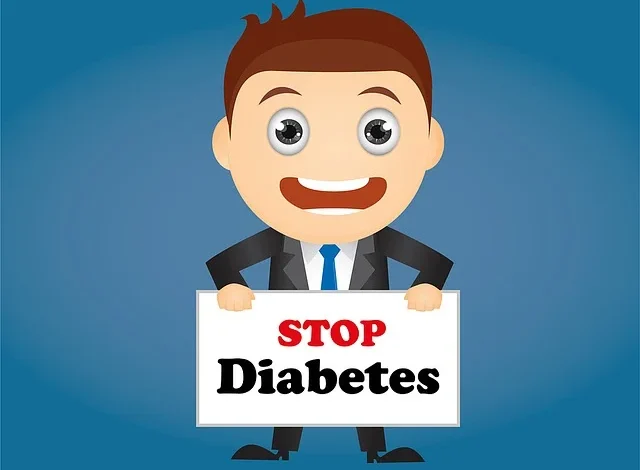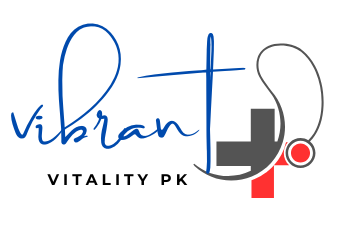UNRAVELING THE COMPLEXITY OF TYPE 2 DIABETES: A COMPREHENSIVE GUIDE TO UNDERSTANDING, PREVENTING, AND THRIVING
Type 2 diabetes

OVERVIEW
Type 2 diabetes patient’s body start to utilize sugars which is called glucose as a fuel which ultimately cause high amounts of sugar circulating within the blood. Among type 2 diabetes patients such raised blood sugar levels cause multiple health issues including immune system, circulatory and nervous systems.

Actually, among type 2 diabetes patients pancreas start lowering down production of insulin and the response of cells become poor to takes less amount of sugar. Type 2 diabetes is commonly called as adult onset diabetes yet it may also develop in childhood as well.
Maintaining a healthy weight for a person living with diabetes is critical to manage blood sugar, blood pressure, cholesterol, and to prevent complications such as heart disease and stroke.
WHAT SYMPTOMS ARE OF TYPE 2 DIABETES?
The most common systems may include:
- Feeling thirsty
- Very frequent urines
- Increased appetite
- Weight loss
- Vision issues
- Fatigue
- Frequent infectious encounters
WHAT ARE CAUSES OF TYPE 2 DIABETES?
The significant research body revealed two major causes of type 2 diabetes which are as follows:
- Cells present in liver and muscles becomes resistant to insulin
- The inability of pancreas to make sufficient insulin to keep healthy sugar levels in blood stream.
WHAT SHOULD BE HEALTHY BLOOD GLUCOSE TARGET?
The ideal blood sugar levels should be between 70-130 before taking any meals and if the meal is already taken then this level should be up to 180 after two hours of meal.
WHAT SHOULD ONE EAT TO DEFEAT TYPE 2 DIABETES?
The type 2 diabetes requires a patient to keep healthy routines as far as diet is concerned. The intake of healthy alternatives may further add energy to fight against disease and ultimately defeat it. The following are the major intake options:
But the best thing is to check with your healthcare team about a target range that’s good for you.
FOODS THAT CONTAIN CARBOHYDRATES
Let’s first talk about some strategies to choose our carbohydrates. Try to choose carbohydrates that are high in fiber such as whole grain, breads and cereals. Lentils, dried beans, peas, brown rice, fruits and vegetables are also an excellent source of fiber.
A good amount of fiber to aim for is 30 to 50 grams per day. It is important to remember that when choosing your carbohydrates you should limit the amount of sugars and sweets such as regular pop desserts, candies, jam and honey as the more sugar you eats the higher your blood sugar will be.
Artificial sweeteners may be useful substitutes if you find it difficult to limit your sugar intake now that you know which foods contain carbohydrates and how they affect your blood sugar.
So knowing how many carbs you’re eating helps you keep your blood sugar in a good range. The fruits, grains, milk, yogurt and vegetables are rich in carbohydrates.
PROTEINS
Protein foods break down into only small amounts of glucose. When you include protein foods with your
Carbohydrates, it helps to slow down how fast the glucose is absorbed.
So, we sometimes say that it helps to stabilize your blood sugars. Although some types of fat are important to include in our nutrition plan, you may also need to limit the amount of high fat food you eat such as fried foods, chips and pastries as high fat foods may cause you to gain weight.
VEGETABLES
Most vegetables won’t increase your blood sugars so you can eat as much as you want. The only exceptions are the starchy vegetables like potatoes, corn, yams and sweet potatoes.
Those are now considered carbohydrate foods and you will want to watch the portions of these lettuce, cucumber, onions, mushrooms, Broccoli, cauliflower, bell peppers and zucchini. These vegetables will not only help keep you full, they offer many important vitamins and minerals to your diet as well as fiber.
Water, plain coffee or tea and diet pop will not cause your blood sugars to increase.
WHAT ARE THE TOOLS TO KEEP A TRACK ON TYPE 2 DIABETES UPTO A SECURED LEVEL?
SMART FOOD CHOICES
Eating a healthier diet actually makes you feel much better in addition to having better blood sugars. The healthy foods may includes:
- Chicken or fish
- whole grain foods
- crackers, cereal; vegetables, especially those that grow above the ground
- Salads
- Prefer fruits over their juices
- Using low-fat and non-fat dairy products like milk and yogurt.
If making big changes in the way you eat seems overwhelming, think about small steps and try to find a quick win.
THE PLATE
One thing you can do to help you control your portions is you eat using a nine-inch plate.
If you divide that plate in half and fill it with vegetables and fruits that leaves you room on the other half for a quarter of the plate to be meat, probably about the size of a deck of cards or three ounces and a quarter of the plate to be starch, grains, or potatoes or bread.
Try to eat your meals and snacks at the same each day and that way you won’t get too hungry at any one time which could lead to overeating.
Take time when you’re eating and chew food slowly.
When it comes to seasoning your food use herbs and spices and avoids salts and butters.
HEALTHY EATING
Basic tips for healthy eating and diabetes meal timing can play a big role for healthy eating. Diabetes tries to aim for eating three meals a day and spacing meals no more than six hours apart. This is because eating at regular times helps your body control blood sugar levels. We will talk about snacks later but keep in mind that not everyone needs to eat snacks. But for some people they can help with keeping your blood sugar stable if you tend to space your meals far apart.
Let’s review a few strategies to understand portion sizes and what a balanced meal looks like. The plate method helps you find the right balance of carbohydrate, protein, and fat that can help you keep your blood sugar at a target level.
The plate format presents essential foods which are required for health. It uses healthy portion sizes of foods. Your plate should be about 9 inches or 22 centimeters across. You may consider it a small quantity of meal but its more than sufficient.
A healthy plate has balance about:
- 50 percent is non-starchy vegetables
- 25 percent is protein
- 25 are starchy vegetables or breads grains or fruit or yogurt.
It is advisable to make a half plate with green vegetable and eggs/chicken/fish should be 1/4th of plate and place corn or some sweet potato in remaining portion of plate.
Maybe you’re wondering if you will still be hungry for some people you may be able to add more carbohydrates to this meal but try to choose a variety of carbohydrates. For example if you eat rice with your meal then you can add a piece of fruit or milk or dairy alternative.
HANDS SIZE
Another tool you can use to measure portions are your hands. The size of your hands can help determine the right portion for you. So make a fist and have a look this is the right portion for you when choosing your carbohydrates, whether it is rice, pasta or fruit.
Next look at the size of your palm without considering your thumb or your fingers. This is a good serving of protein food like meat chicken or fish.
Consider the thickness of your protein to be the same as the thickness of your little finger. One to two thumb tips is the added fat. This would be salad dressing gravy mayonnaise or butter.
Look at your hands all your two hands can carry, that are how much non-starchy vegetables you can aim for at your meals.
So there are two simple ways to look at serving sizes to help you build healthy meals.
BLOOD SUGAR MONITORING
Diabetes is a condition in which your body cannot properly use and store food for energy, the fuel that your body needs is called glucose which is a form of sugar. You’ll need to work with your doctor to set a blood sugar range. That’s right for you now.
Let’s look at this chart about how food affects blood sugar. If you would like to spend longer looking at this chart then go for it. As you can see on this chart the left side are foods that increase your blood sugars and on the right are foods that have little or no increase to your blood sugars.
So let’s look a little bit more closely at the sections together. Carbohydrates or carbs as many people call them are what cause your blood sugar to rise the most. High carb foods include fruits, milk , yogurt potatoes, beans , rice, and sugar sweetened foods and drinks.
Even though carbs raise your blood sugar that doesn’t mean you can’t eat them. It just means that you need to eat the right amounts at the right times.
It’s most important to know how many carbs to eat each day. Not only can this help you feel better, it also helps prevent future problems with your eyes, nerves, heart, kidneys and other parts of your body.
STAYING IN TRACK
People fall off-track all the time when they try and eat a healthier diet. It’s normal. Don’t get upset about it. Just try to get back on-track soon after you fall off so you don’t get totally derailed.
It’s normal to get discouraged periodically. Think about talking to a dietician. They can help you tailor these diet recommendations to fit your needs and come up with a plan that’s easier for you to follow. There are no foods you need to avoid entirely.
CONCLUSION
As we all know, every disease require due attention, diet and precautions. In the same sense, type 2 diabetes requires a special diet plan and precautions. It is a disease which may arise in adulthood or even in childhood.
In type 2 diabetes the patients are unable to produce required levels of insulin to support body functions which results in higher levels of sugars in blood streams.
One must take medical practitioner’s advice before starting any special type of food requirement or any type of medications. Strict compliance of healthy routines, diet and meal patterns are inevitable for the precaution against type 2 diabetes.
Frequently Asked Questions
What is type 2 diabetes?
Type 2 diabetes patient’s body start to utilize sugars which is called glucose as a fuel which ultimately cause high amounts of sugar circulating within the blood.
What are symptoms of type 2 diabetes?
The most common systems may include:
· Feeling thirsty
· Very frequent urines
· Increased appetite
· Weight loss
· Vision issues
· Fatigue
· Frequent infectious encounters
What are type 2 diabetes causes?
The significant research body revealed two major causes of type 2 diabetes which are as follows:
1. Cells present in liver and muscles becomes resistant to insulin
2. The inability of pancreas to make sufficient insulin to keep healthy sugar levels in blood stream.
What is secured blood sugar level?
The ideal blood sugar levels should be between 70-130 before taking any meals and if the meal is already taken then this level should be up to 180 after two hours of meal.






